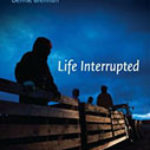Contested Justice: The Politics and Practice of the International Criminal Court Interventions

Editors: Christian De Vos, Sara Kendall, and Carsten Stahn
Publisher: Cambridge, UK; New York, NY: Cambridge University Press, 2015. 526p.
Reviewer: Luke Moffett | May 2017
Despite coming into existence in 2002, opening investigations in ten situations and issuing over thirty arrest warrants, the International Criminal Court (ICC) has only witnessed three convictions. Although the ICC was mandated to end impunity for international crimes and deliver justice to victims with the support and cooperation of State Parties, the Court has been slow in securing suspects and convictions. The first Prosecutor of the ICC Luis Moreno Ocampo noted that the success of the Court would be measured in fewer cases coming before the Court. This would develop as State Parties prosecuted international crimes themselves, in what Ocampo called as ‘positive complementarity’. This ‘complementarity’ was the byword to allow the ICC and State Parties to work together in ending impunity by investigating and prosecuting crimes, and by minimising any friction between state sovereignty and the Court’s investigations. Yet despite this rhetoric, intervention by the ICC has been negatively perceived by political elites in situations under investigation.
Most of the attention of the Court has focused on violence in Africa, where states have been unable or unwilling to investigate and prosecute individuals within their jurisdiction for international crimes. Increasingly, the relationship with the ICC and African states, in particular the African Union, has become acrimonious. Some African leaders have accused the Court of ‘targeting Africans’ and being neo-colonial after the indictments of Sudanese President Omar Al-Bashir and Kenyan President Uhuru Kenyatta. Recently, the goal of holding individuals to account has been strained at the Court following the collapse of the two trials in the Kenyan situation, which included President Kenyatta and Vice-President Willem Ruto. Many commentators and civil society organisations have cited both domestic and international political, including smear campaigns of the Court and more nefarious interference of witnesses and intimidation of victims, as a way for political elites to manipulate the fragile investigative and prosecutorial ability of the ICC in order to frustrate justice.
Contested Justice represents a welcome foray into the complicated social and political relationship between states and the ICC. As the ICC extends its gaze from Africa into examining more protracted conflicts, such as Palestine/Israel, Colombia and Georgia, this book offers some telling examination of first decade of the Court’s investigatory and prosecutorial interventions that can serve as lessons, but perhaps not yet learned. The book draws upon a strong cohort of authors from academic, civil society, and legal practitioner backgrounds, from within and outside the ICC, and includes early career researchers to well-seasoned civil society experts and distinguished professors. As the editors themselves state in the introduction, the book also looks beyond ‘Hague-centric’ commentary to engage a wider constituency of international criminal justice in a more gritty critical analysis of the practice of the ICC in countries before the Court. The book achieves this through being split into four parts: (1) law’s shape and place; (2) reception and contestation; (3) practices of inclusion and exclusion; and (4) politics and legal pluralism.
The first part of the book on ‘law’s shape and place’ begins with Frédéric Mégret’s chapter on the ICC’s constituency on whose behalf it acts. He finds that while there are diverse constituencies that at times conflict, the Court may be its own biggest constituency. Carsten Stahn continues the examination of the justification of the ICC as a civilising mission in terms of the ‘local’ and the tensions between the imagined and the rights-based approach for victims, which together have a disempowering effect on local engagement with the Court. David Koller takes a more political exploration of the relationship between the local and global through the lens of Simpson’s ‘jurified diplomacy’, finding that without substantial investment, international criminal trials cannot significantly benefit local transitional justice mandates. In her chapter, Jaya Ramji-Noagles suggests a more bespoke transitional justice approach to ICC engagement with local actors through community engagement. However, with the example of the DRC, she suggests that alleged perpetrators should be engaged with on reparations and communities earlier on to help inform whether or not the Prosecutor should intervene, and that this would reflect a politicisation of justice for the sake of local legitimacy. Michael Newton proposes a community-based approach to complementarity, noting that the Court needs to develop concrete standards for local processes to guide dialogue and decision-making. Yet such oversight by the ICC of local transitional justice processes may feel more like international control rather than complementing local approaches.
The second part of the collection on ‘reception and contestation’ reflects the practical tensions that have played out in the ICC Prosecutor’s “fast and loose” approach to interventions and complementarity in the first few situations before it. Stephen Oola’s chapter examines the situation in Uganda where complementarity with the ICC has dominated the transitional justice debate at the behest of the Ugandan government’s intent to focus the violence on the Lord’s Resistance Army (LRA) and its trial of LRA commander Thomas Kwoyelo. It makes for difficult reading when Oola concludes that transitional justice efforts by civil society and victims have been hijacked by political elites for a government narrative of the conflict and façade of justice in the Kwoyelo trial, denying effective redress to the vast majority of victims. In Pascal Kalume Kambale’s subsequent chapter he directs his criticism at the ICC Prosecutor and his political expedience in bring the DRC cases forward by only targeting the ‘small fish’ and instead of strengthening local judicial institutions, weakened them. Njonjo Mue and Judy Gitau highlight in their chapter the role of civil society in supporting the work of the ICC, despite political elite interference and contestation. Déidre Clancy continues the discussion on the often hidden role of civil society in acting as intermediaries for the Court in their capacity to ‘mediate, interpret and influence, the local,’ despite the risks posed and political nature of such work in situations under investigation.
The third part of the book examines the ‘practices of inclusion and exclusion’ and how legal subjectivity is constructed from more bottom-up perspectives of victims and affected communities engaged by the Court through outreach, participation, assistance and reparations. Matias Hellman examines the challenges and limitations of outreach, finding that the ICC has learnt from the lessons of the ICTY and provides more measured and neutral information on what the ICC can and cannot do. Hellman’s chapter sits in contrast to other chapters in the book that criticise the grandiose promises of the Court in contributing to deterrence, reconciliation and justice for victims. Kamari Maxine Clarke in her chapter argues that the increasing jurifidication of victims as part of the rule of law is used as an increasing neo-liberal agenda of good governance, neglecting wider and more relevant forms of justice for victims. Laurel Fletcher continues the discussion on the use of the victim’s suffering as a justification and mobilisation of international criminal justice with the promise of justice, that ultimately dashes victims’ expectations of justice and risks undermining local support of the ICC. Peter Dixon, drawing on extensive research in Ituri, DRC, explores the politics of recognition in the way in which reparations and assistance are perceived by victims and affected communities can result in stigma if not carefully crafted and managed. Sara Kendall’s chapter asserts that victim participation, assistance, and reparations should be considered as restorative practices of the Court as legal humanitarianism, rather than limited to international criminal justice. Together all these chapters emphasise that the narrow focus of ICC interventions frames the debate on what crimes are worth redressing having implications for the legacy of the Court once cases are completed.
The final part of the collection examines the ‘politics and legal pluralism’ in how ICC interventions have played out in domestic political and legal contexts. Christian de Vos’ chapter outlines the implementation of the Rome Statute into domestic law in Uganda (where an earlier draft was rushed through for the 2010 Review Conference) and in Kenya, with both countries conforming to the Rome Statute standards without developing more legal pluralism on the best way to tackle international crimes. Patryk Labuda’s chapter discusses the implementation of the Rome Statute in the DRC including the proposed hybrid tribunal to complement the ICC, but finds that legislating on international crimes has been misapplied and the implications of legal pluralism and state cooperation under the statute. Turning away from situations before the Court, Jennifer Easterday explores the intervention of the ICC in the preliminary examination of Colombia, and how the Colombian government managed the transitional justice under the watchful eyes of the ICC to suit its own narrative of the past and negotiate a ‘quasi-amnesty’ of a reduced sentences for paramilitaries responsible for international crimes. Mark Kersten assesses the ICC intervention in Libyan, noting that while some commentators suggested that the ICC arrest warrants against key figures in the Gaddafi regime encouraged them to fight to the death and made a peace negotiation more difficult, the ICC’s intervention was somewhat more nuanced both in the controversy around on the back of a UN Security Council referral in tandem with military intervention. Kersten also critiques the endorsement of local trials by the Prosecutor of Libyan ICC indictees, despite serious fair trial concerns raised by the defence. Much like other situations before the ICC, Kersten notes that the debate on transitional justice after ICC intervention was framed by complementarity leaving little ‘middle-ground’ for other justice options. The final chapter by Juan Méndez and Jeremy Kelley takes a broader view of the ICC picking up on earlier themes raised in the book on the role of the ICC in local contexts. They are argue that justice and peace are no longer dichotomous, but also that justice cannot be simply instrumentalised for certain cases, instead it needs to be used with some certainty and consistency in tackling international crimes. As such, the ICC can no longer be considered as part of a single justice track, but as part of a ‘multi-tracked peace-making process’.
The book is an invaluable text for civil society organisations, researchers and practitioners looking to understand ICC interventions and wider debates on the local and global justice dynamics. Notably the book is available online free as an open access book, enabling greater access. While it does engage with local perspective, perhaps missing at times was the international and regional dynamics, in particular African State Parties and the African Union’s strong dissent of the ICC’s intervention. That said there are strong emerging themes throughout the book on how to manage the relationship between the ICC and local contexts, Court practitioners and intermediaries, victims and judges, as well as the needs to confront the ‘shadow of complementarity’ as Oola terms it in blocking out other transitional justice approaches to addressing conflicts and international crimes. As Ruti Teitel suggests in her foreword of the collection, the book offers a way to interpret the unique practice of the Court in context and the space it creates in international affairs and normative value in international law and politics. In all, the book is a timely, well-written, and constructive addition in comprehending the impact of ICC interventions on states, affected communities and victims; and how to better manage expectations, processes, and outcomes of the Court in the future.
Luke Moffett, Lecturer, Queen’s University Belfast


